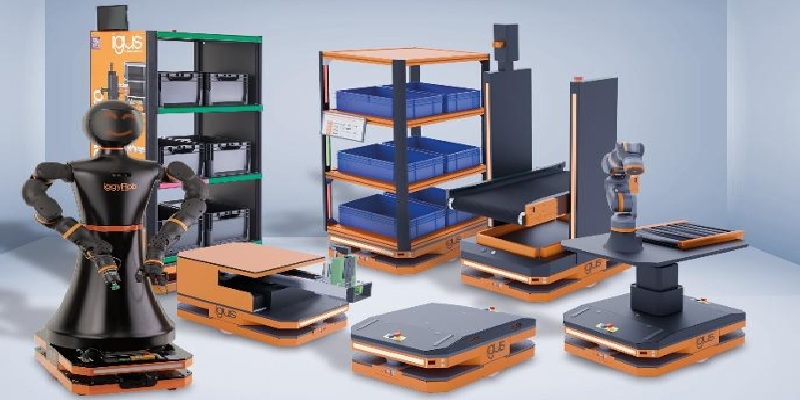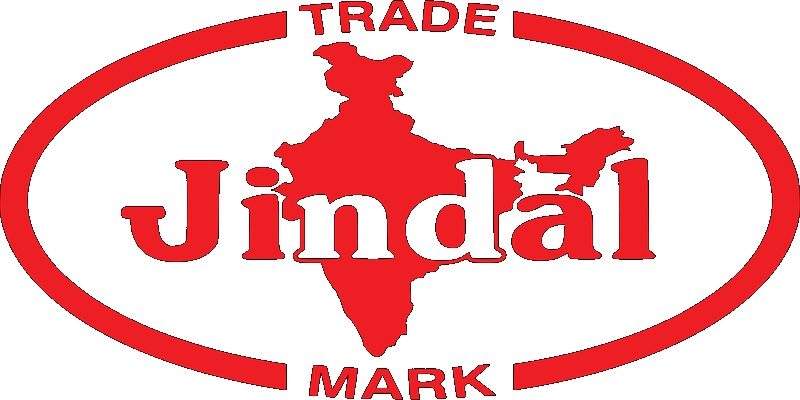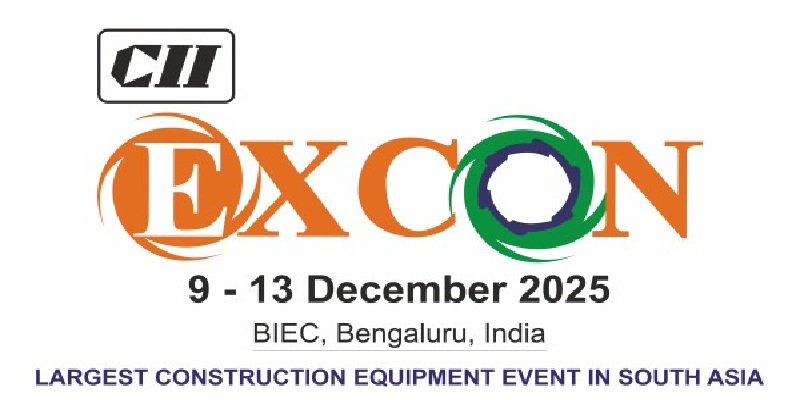Schedule a Call Back
The changing dynamics of material handling market
 Articles
Articles- Sep 30,22
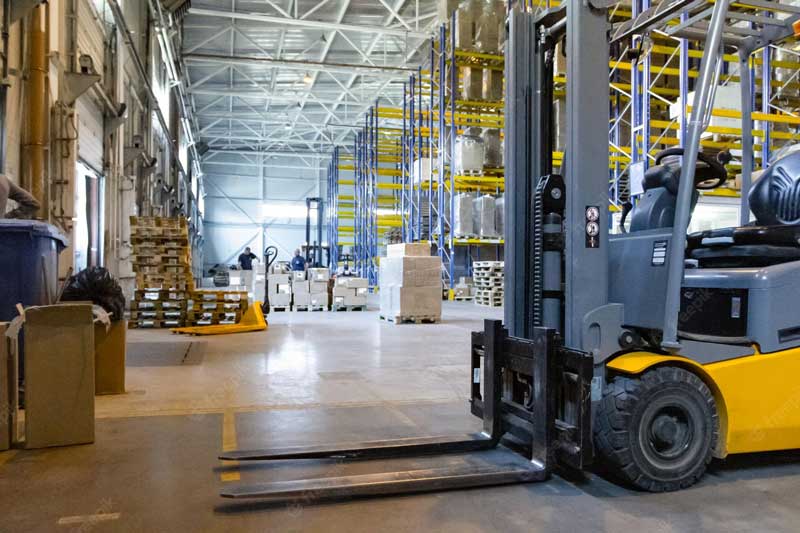
In September 2022, contract logistics provider DHL Supply Chain - a part of DPDHL Group of Germany - announced that it will invest Euro 500-million (around Rs 4,000 crore) in India over the next five years to expand its warehousing capacity and sustainability initiatives. As per the expansion plan, the company will increase its warehousing space from 10 million sq ft to about 22 million sq ft by 2026. Despite the current economic and geopolitical uncertainties in the world, warehousing and logistics companies (like DHL) are seeing enormous growth potential in India.
In the first half of 2022, demand for retail space witnessed strong demand due to rising consumption and disposable incomes. At the same time, manufacturing - led by engineering and auto and ancillaries segments - has gathered momentum driven by the government's favourable incentive policies and rise in invest by multinational (MNCs) and domestic companies. As a result, the demand for warehouses has seen a healthy rise in India. The robust deal pipeline indicates a record net absorption of 42.5 million sq ft in 2022 as against 39 million sq ft a year ago, according to a JLL India study.
With companies expanding their operations in tier-2 and tier-3 cities, these areas are experiencing a surge in demand for warehousing (especially Grade A-compliant). Grade A warehouses offer extra height & floor load, and efficient operations as they are equipped with mechanised material handling equipment (MHE). These warehouses provide sufficient docking stations and allow easy movement for MHEs and heavy vehicles. Hence, warehousing has been at the vanguard of a revolution in material handling systems and solutions.
Need for modern MHE to increase efficiency
Large manufacturers having pan-India presence usually operate their own warehouses in multiple locations. On the other hand, retail and e-commerce companies manage their own operations or outsource their logistics and warehousing operations to third-party logistics (3PL) players. Rising online shopping, entry of big retail chains and implementation of GST have propelled consolidation of warehouses, making them more complex and bigger.
The task to manage the soaring volumes demands modern material handling and warehousing equipment. Elaborating on the impact of warehouse consolidation on the MHE industry, Anil Lingayat, Executive Vice President & Business Head, Godrej Material Handling, says, "The land costs are high in India. The consolidation of warehouses means more space to stack your products which means more cost. The only solution is to go vertical and use minimum space between the aisles. The product such as articulated forklift trucks and reach trucks can work in less than 2 m aisles and 3.2 m, respectively, and stack up to 12 m. Reach trucks have higher speeds and, thus, are more productive."
Utilising consolidation warehouses improve the supply chain's performance while reducing costs. The primary function of warehouses is to handle goods, and most businesses use equipment such as pallets to manage their storage and movement. "Companies are investing in automation to increase warehouse efficiency as the supply chain is consolidated, creating more opportunities for material handling equipment (MHE) suppliers. As the rate of transactions increases in the warehousing market, so will the demand for MHEs such as forklifts. Forklifts handle palletised loads for a quick assortment of commodities in warehouses. Godrej Material Handling has established a dominance in the market by offering locally manufactured forklifts for purchase, lease, and rentals," informs Anil Lingayat.
In the recent years, the MHE segment has seen an increase in demand for safety, productivity reliability, ease of operation and lesser maintenance. "High-performance material handling equipment is essential for higher throughput per hour, more reliability, less maintenance and uptime of more than 95%. In a nutshell, it is a long-term consumer advantage," says Rajesh Jakhmola, Director Sales, Linde Material Handling India.
According to Vishnu Bhagwat, General Manager, Cascade India Material Handling Pvt Ltd, there is need to match the supply & demand ratio in terms of machine throughput vs time to move the products to the end destination where each and every operational function is well time-defined. “Hence, there are chances of errors & delays when it is driven by manual version. To overcome this, there is need to have modern material handling equipment that are designed to increase efficiency and reduce the down time,” he adds.
In the warehouse equipment category, there has been a discernible shift toward equipment with cleaner, greener, and smarter technologies.
Automation and safety in demand
Post Covid 19 pandemic, the industry has witnessed a major shift towards adoption of automation. With India emerging as a major manufacturing & sourcing options for global companies, logistics and warehouse managers are feeling the need to improve operational efficiency with advanced material handling solutions.
Scalable and cost-efficient automation is considered to be a critical element of an optimal material flow. Automated procedures ensure consistent, efficient, and flexible processes."Due to automation, the consistency of throughput is achieved 100% as per system design. Besides, non-involvement of human intervention eliminates errors. Automation improves your goods handling times and helps in minimising personal injury and damage to goods and infrastructure," says Rajesh Jakhmola. Linde provides automated trucks, the latest technology, and a comprehensive material flow consulting service to help the users to fully exploit their economic potential.
In the recent times, automation is proving to be an impactful tool for businesses to streamline their operations. "From offering increased efficiency and reliability to customers to enabling cost optimisation in organisations, automated material handling equipment solutions are proving beneficial. They help in reducing labour cost and labour dependency, enhancing transparency in data and operations, better handling of e-commerce/customised operations, better management of warehousing during excessive seasonal volume," observes Sakthivarman R, VP - Operations, Snowman Logistics Ltd - one of the leading integrated temperature-controlled logistics service providers operating on pan-India basis.
Giving the user industries' perspective on the material handling equipment, Sakthivarman says, "Our focus has always been on building robust warehouses and operating processes for seamless logistics operation at key locations for creating maximum value for our customers. Snowman facilities mainly cater to the storage, handling and transportation of seafood, ready-to-eat food, ice cream, dairy products, quick service restaurants, confectionery & bakery products, fruits & vegetables, pharma, and other products. We use double deep reach trucks to optimise the chamber utilisation, battery operated pallet trucks, hand pallet trucks, stackers and forklifts in our warehouses."
With rising complexities, the companies are increasingly feeling the need to integrate all activities with material handling operations using Internet of Things (IoT) technology to give them complete visibility. "Latest developments and trends in the material handling sector are a result of the intervention of technological and IoT-based solutions. These play a major role in automation and human-machine connectivity, thereby increasing productivity and accuracy in transactions and inventory. Data collection and data analytics help to improve the efficiency of operations," opines Sakthivarman.
Rise in usage of advanced automated systems demands better in-built safety features in the material handling equipment. Rajesh Jakhmola elaborates, "Safety in the warehouse or production environment is the number one priority in intralogistics. With ever-increasing demands on material handling these days, it is essential to have reliable measures in place to protect drivers and employees, as well as the goods being transported, the shelves and any other equipment."
Handling narrow aisle
Companies are building warehouses of greater heights (up to 17 m) in order to have more storage ability in much less space. This is resulting in demand for very narrow aisle (VNA) trucks. For example, the K man-up turret truck from Linde Material Handling enables high turnaround capacity for order picking and handling processes in high rack warehouses. "The powerful drive trains make this possible, as the truck can move and lift at the same time. Also, even at high lift levels the speed remains high and a high level of residual lift capacity is available. Various assistance systems are available which help to navigate accurately through warehouse or to avoid obstacles," elaborates Rajesh Jakhmola of Linde Material Handling India - a manufacturer of forklift trucks and warehouse equipment.
The advent of artificial intelligence (AI) and automation has created new market sub-segments for automated guided vehicles (AGVs) and automated storage-and-retrieval systems (ASRS), both of which are growing at a much faster rate than traditional sub-segments and creating significant challenges for OEMs. With rise in Grade A warehouses (which are armed with modern amenities), demand for technologies like ASRS, AI, Internet of Things (IoT), Radio-frequency Identification (RFID), etc will go up to reduce human error and ensure faster processing.
Rajesh Jakhmola says, "Automated storage and retrieval systems are in demand throughout many segments of the industry. Although these systems were initially intended for heavy-pallet loads, technological developments have made it possible for them to handle much smaller loads, increase efficiency and allow for higher warehouse storage densities."
Advantages of AGVs
The need to enhance productivity in the warehouses amid rising competition is leading to a jump in demand for autonomous mobile robots (AMRs). "AMRs can deliver everything from intricate picking fulfilment to managing space efficiency by moving pallets and large payloads not required immediately to remote/free locations on the floor away from the operating zones. The ease of deployment of additional AMRs also helps to rapidly scale up the responsiveness of warehouses to peaks in demand. It enables the movement of more loads efficiently with a full-function control handle and thoughtfully placed switches allowing the operator to intuitively manage all functions," says Anil Lingayat.
Factors such as increasing warehouse automation and the rising adoption of Autonomous Guided Vehicles (AGVs) across a variety of industries are expected to drive market growth. "Autonomous guided vehicles are 100% autonomous requiring no human interaction at all. Due to this the chances of errors are reduced manifolds. Unlike the traditional forklifts, pallet trucks etc they require very low maintenance," says Rohit Dashrathi, Founder and Director Rucha Yantra LLP.
According to Vishnu Bhagwat, by using AVGs, modern warehousing & logistics companies are getting benefits in terms of minimal labour/manual interventions and maximum throughput. “They have higher efficiency and can increase the storage cubic capacity with high rise storage where man has limitations in terms of safety (EHS) norms," he says.
Sustainable trends
According to Mordor Intelligence, India’s automated material handling (AMH) market - valued at $ 1.354 billion in 2020 - is expected to reach $ 2.739 billion by 2026 at a CAGR of 12.7%. Factors like increase in infrastructure investment by the government and investments from industries (along with the 'Make in India' initiative) are driving the AMH systems demand in the country. “With technological intervention some recent innovations that have happened in the MHE sector include auto racking adjustment-height selector, online monitoring systems, safety features, alarms and preventions to avoid accidents and motion sensors. These are offering a new work dimension to the operators and definitely help in streamlining warehouse operations. We get real-time updates which have helped avoid major mishaps and losses. At Snowman, our IT systems are the best in class and are built to handle 3 lakh pallet businesses," says Sakthivarman.
To meet the needs of automation and energy conservation of the industry, the suppliers to the material handling equipment makers are also gearing up. "By looking at the demand of achieving the maximum throughput, it is inevitable to have a modern process of materials handling. For this, Cascade Corp USA has already developed the attachments to suit with the Automatic Guided Vehicle (AGV) where machines are running for 24x7 operations without human interference. Also, by looking at the environmental conditions on energy conservation, we have launched forklift attachments that are working on the principle of electric energy where one can reduce the wear & tear as well loss of energy," explains Vishnu Bhagwat of Cascade India Material Handling - a provider of lift truck attachments, forks, masts and related technologies. Cascade supplies a range of fork positioners, paper roll clamps, push-pulls, carton clamps, rotators, etc.
A notable trend in the industry is increasing switch to cleaner battery-powered electric material handling systems. According to Vishnu Bhagwat, electric forklift attachments, AGV mounted attachments, lithium ion battery for low cost of maintenance & long service life per charge, safety equipment (such as blue light), camera system to monitor the pallet movement at high rise stacking lever, reverse driving features, etc are some of the innovative technologies that have come up in the recent years.
Sakthivarman adds, "Lithium batteries would be a major contributor in place of lead-acid batteries which would reduce charging time and increase running hours. There’ll be an intervention of smart features in the times to come which will benefits MHEs.”
Gaining strength
Historically, material handling equipment industry has been growing at double-digit growth rate year-on-year (exception being the Covid pandemic-hit 2020). In the post lockdown phase, the MHE market showed remarkable growth with manufacturing and industrial activities picking up. Experts believe the industry will grow at 20-25% - especially in the top-end segments with customers showing more inclination to invest in high-end or newly launched products which are designed for high efficiency and low energy consumption.
In spite of this robust growth, the number of MHE manufactured in India (especially the modern equipment) are very small compared to developed countries and China. In order to increase the competitiveness in the global trade, Indian manufacturers and their logistics & warehouse solution providers will have to adopt advanced material handling products to bring down cost and increase efficiency. This presents huge opportunities for MHE makers who can provide cost-effective, high-quality innovative solutions to the end-user industries.
Some remarkable benefits offered by advanced MHE are:
Related Stories

TIL Launches Three Indigenous Material Handling Innovations at EXCON 2025
TIL unveils three advanced, fully indigenous material handling products at EXCON 2025, reinforcing its focus on safety, engineering excellence, and India-ready innovation.
Read more
India’s demand for high-precision machine tools is rising: K Balasubramaniam
In this interaction with Rakesh Rao, K Balasubramaniam, Founder, Tsugami Precision India, discusses the evolving machine tools landscape and the company’s role in shaping India’s manufacturing t..
Read more
Can AI be the game changer for Indian manufacturers?
While manpower issues and quality are driving adoption of industrial automation, cost and lack of knowledge are causing hindrances. Artificial intelligence (AI) can be the game changer, writes Rakes..
Read moreRelated Products
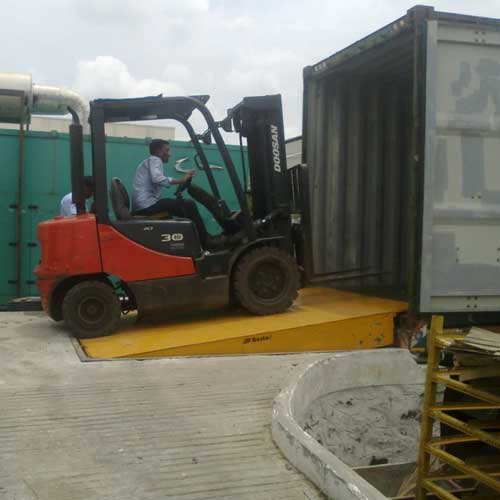
Dock Leveller
Besto Material Handling Equipments offers a wide range of dock leveller.
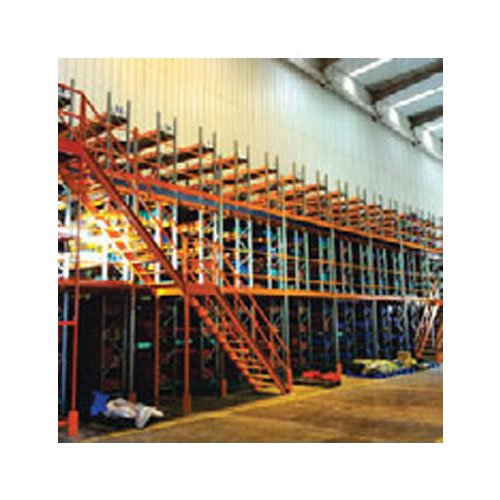
Multi Tire
SCI Storage Solution offers a wide range of multi tire.
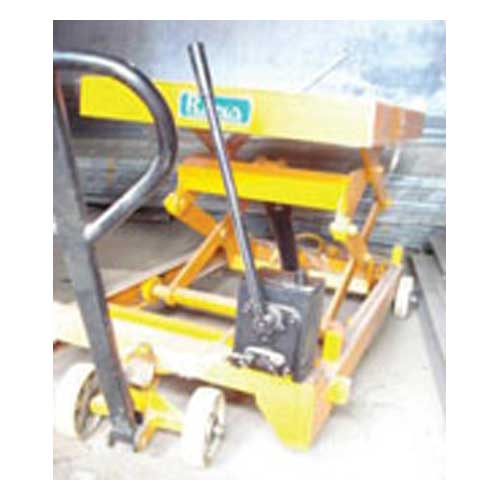
Industrial Lifting Equipment
Rana Material Handling Equipments Pvt Ltd offers a wide
range of industrial lifting equipment.





